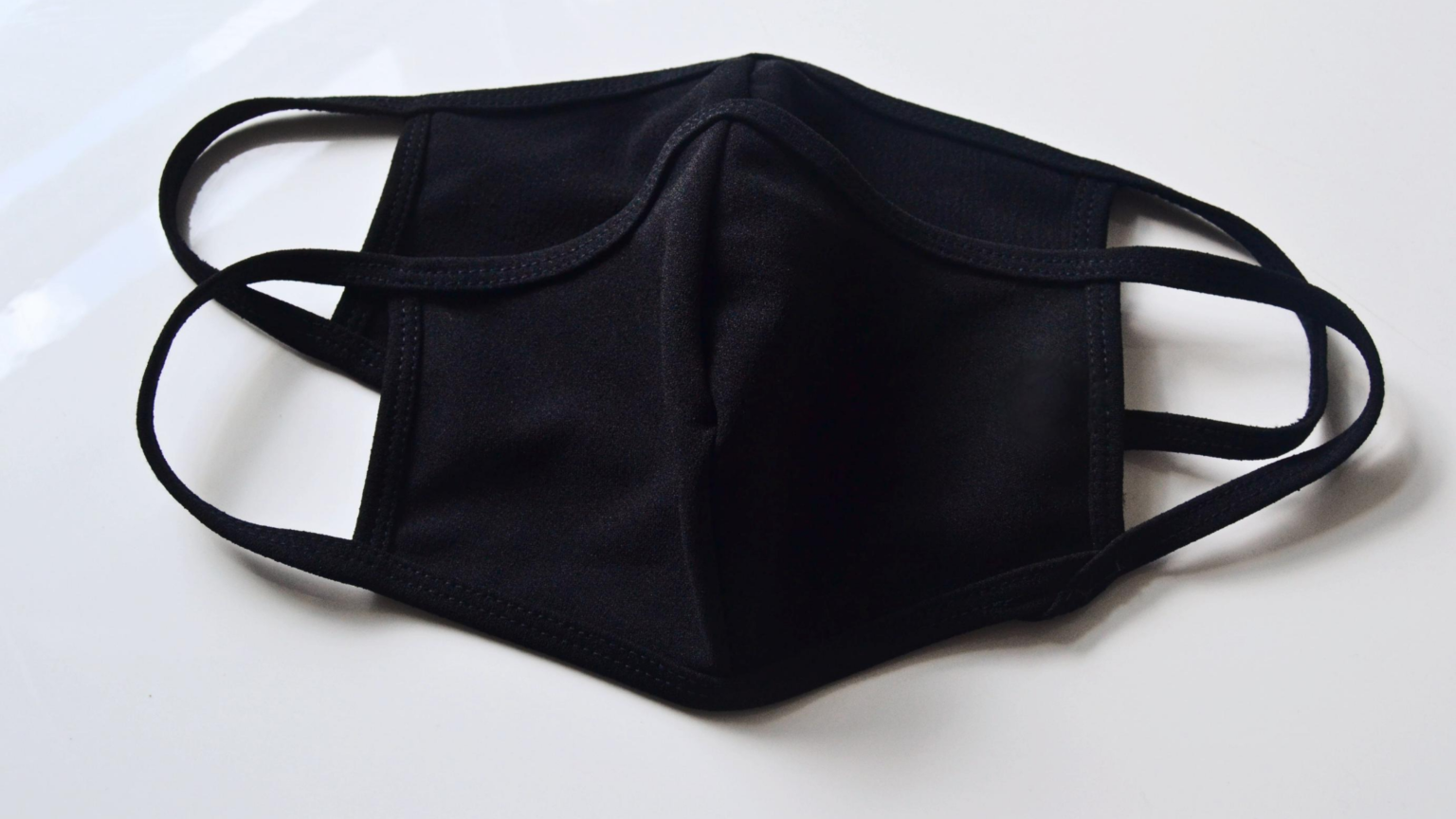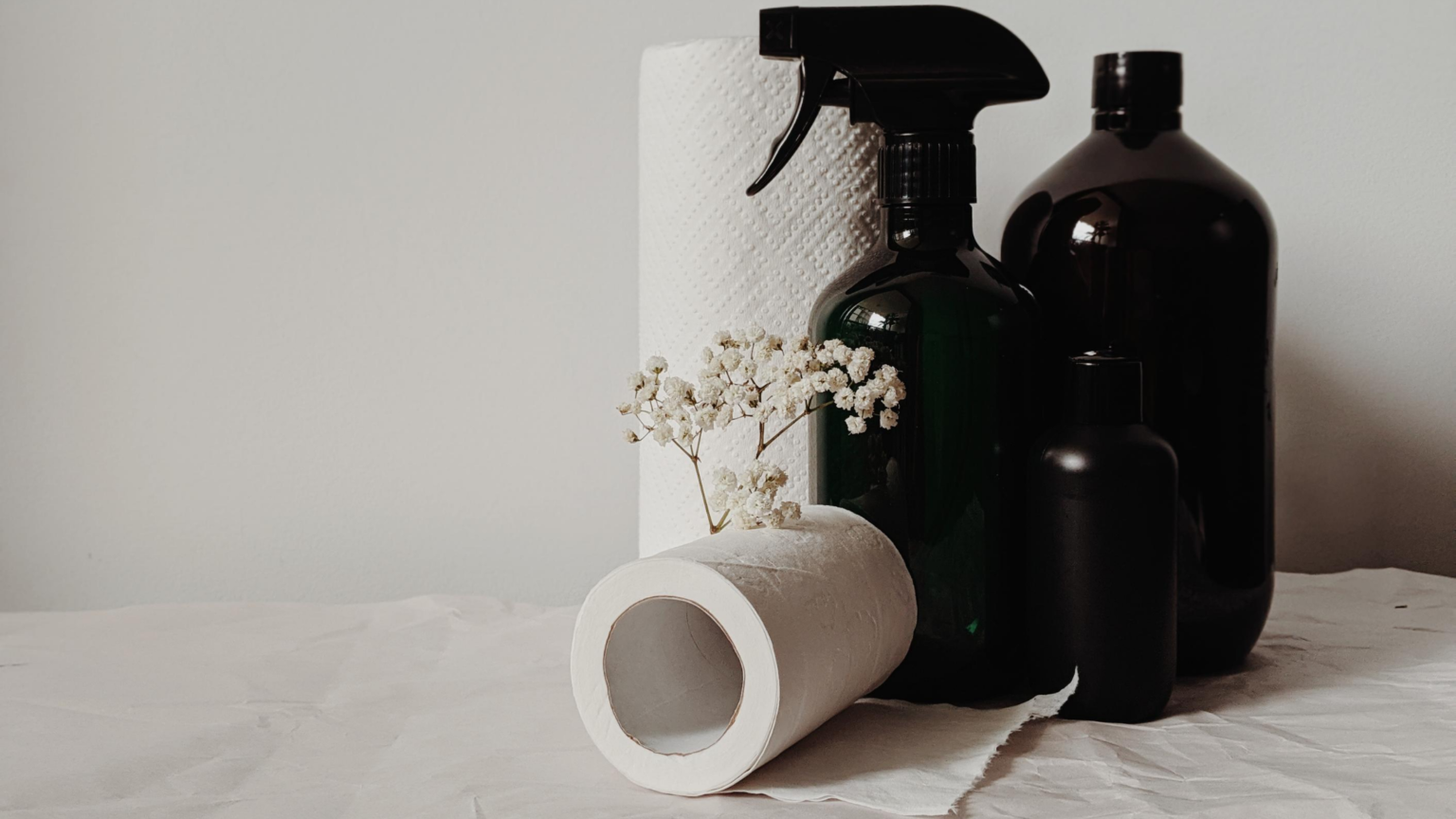I wrote a post on creating a sustainable daily routine way back when, but with the world transforming and the new normal taking over, some of those items may no longer be applicable. I’ve also had a lot of you requesting more tips on how to incorporate sustainability into your lives right now. In this blog post I will share how to create a sustainable daily routine (COVID-19 edition) so that you can stay say while helping the environment.
I share four ways to live more sustainably during this crazy time that won’t require you to break the bank. They are all tips I have personally tested and stand behind, so you know that they work. Let’s learn how to create a sustainable daily routine.

reusable masks.
The most essential item in 2020? Face masks. Disposable face masks are also one of the most common forms of pollution that I see now on the streets, sidewalks, in trees (people hang them up on a branch then forget about them….) and so on. Even if you dispose of your masks properly, you should not be reusing them. These masks do not break down easily either, so they will last in the environment for a long time, potentially harming our waterways, wildlife and more.
Easy solution? Get a reusable mask (or two)! You are massively cutting down on your waste by investing in a good-quality mask. For instance, I go out typically 3-4 times per week to a location that requires me to wear a mask, so that’s 3-4 masks per week that I am diverting from landfill. Some people go out every day, so their impact could be greater.
You can find masks made by artists on Etsy, which is a great way to support your local crafters and economy. In my community, art stores and speciality stores (Zero Waste Bulk) are selling masks made by locals, as well. If that isn’t an option for you, see what other stores are selling these masks, or where you can buy them online. You can get a good quality mask for around $10, saving you so much in the long run. Reusable masks are often made with fun fabrics, so you can get ones that match your style (I have ones with bees on them!) Alternatively, look up some DIY ways to make your own mask out of old fabric or clothing articles.
Note: You should wash the reusable face masks after each day that you wear them. That’s why I recommend having 2+ so you can alternate while the other is drying.

coffee.
This one is tough for me. If you follow me on social media, you know I love coffee shops. Before the pandemic, I was visiting my local baristas around 3 times per week because it’s my ideal study spot and its my favourite way to treat myself. Even better, I was bringing my own reusable coffee mug/tumbler to cut down on waste. Where I live you can sit in cafes (for the most part) again, but only two places that I know of have restarted their reusable mug program/in-store mug use. This means if I want to go out and get coffee anywhere else, I also will be creating waste from the cup.
The solution that I’ve come up with is to cut down my spending on to-go coffee and instead find ways to make coffee on my own that I enjoy. I know, I know: coffee never tastes the same as when you get it at the coffee shop, even if it’s the same beans. My homemade cold brew is never quite right – at least not yet. However, I’ve learned that the best way to enjoy your at home coffee is to experiment. I always buy different beans and I have two main methods of brewing: pour over and french press. I experiment with brewing times, bean concentrations and even add-ins (tip: add a dash of cinnamon to freshly ground beans right before brewing).
After plenty of experimenting, I am excited to make my cup of coffee every morning. I’ve also become curious about the coffee bean industry, how beans are grown, roasted, etc. Through my experimenting, I have found a few staple bean roasts from local cafes that are Fair-Trade certified and roasted in house. It feels good to brew an amazing cup of coffee that I know is better for the planet and for local businesses. I don’t mind spending a bit more on a pound of coffee beans now if I know what preparation has gone into the bag. Besides, buying a $20 bag of coffee beans will give me 15+ cups of coffee versus only 3-4 drinks at the cafe.
Do I miss my nitro cold brew? Sometimes, yes (although my heart can’t handle that caffeine very well). Most of the time I am perfectly happy with my newfound love for brewing coffee at home, and knowing that I am making sustainable choices while doing so is a bonus. That being said, I will definitely still treat myself at the coffee shops once reusable mugs are again an option! 😉

cleaning.
What household hasn’t bought extra bleach, sanitizer and other cleaning supplies since the pandemic started? Not only do conventional cleaning products have toxic chemicals that harm waterways when washed down the drain as well as can be dangerous to human skin, they also produce a lot of waste. For instance, who hasn’t bought disinfectant wipes for cleaning counters, doorknobs, etc? You create waste with every wipe you use, and any remaining chemicals on those wipes leach into the environment as they sit in landfill/escape into water, while also contaminating any items around them – so everything in your garbage bin could potentially carry the harmful toxins.
There are more natural ways to clean your house that are effective at killing bacteria without harmful additives. Many of these cleaning tips are cheaper because you can use single ingredients rather than complicated store-bought cleaners – some of these ingredients you may already have lying around your home. Check out this blog post or podcast for three cheap, easy and inexpensive cleaning tips that are eco-friendly and are great for day-to-day cleaning. If you need something stronger (like a rigorous disinfectant), check out this post by the David Suzuki Foundation for non-toxic disinfecting suggestions.

Energy use.
In a work-from-home situation, you are going to be using your laptops and other devices a LOT, and also using plenty of energy from other sources in your house such as lighting, AC, other electronics, etc. To reduce your energy consumption throughout a day of working from home (and to save you money on your electrical bill) there are a few quick and easy steps you can take.
The first and simplest tip: stop the use of phantom or “vampire” power! This term refers to keeping your devices plugged in even when they are fully charged. Unplug them once fully charged, or use a smart power bar that shuts off when the devices are fully charged; use the battery efficient settings on your devices and close background apps to allow your battery to last for longer.
Another tip because you are likely washing things more often with COVID-19: switch up your laundry routine by washing in cold water, and hang-dry as many items as possible to limit your use of the dryer. Heating water is responsible for 90 percent of the energy use from washing machines – imagine how much energy you will save by washing in cold water! I lived in multiple student housing units without a functioning dryer for 8+ months, so I dried all of my clothes on a rack and in the bathroom. A super simple solution that doesn’t require too much time, yet saves so much energy! Besides, communal dryers are pretty gross…
My last point to cut down on energy use is to choose a smart working spot that receives plenty of natural light and stays relatively cool/warm (depending on the season) without the use of AC or heating. Excessive AC use in the summer is a major energy sucker, as is overheating. Regardless of the season, try to keep your home at a stable temperature (e.g. 21°C) and make sure the windows and doors are closed. Avoid running your AC between 11am and 5pm, when energy prices are highest and in greatest demand. If you are finding it too cold/hot, wear the proper clothing rather than crank up the AC/heat. Additionally, work beside a window for natural light, or in more airy places in your home, so you don’t have to turn on extra lighting.
final thoughts.
We are living in an interesting time, to say the least. Sustainable living has definitely been a challenge since the world shifted in March, but it hasn’t been impossible. Try incorporating these tips into your daily lifestyle – they are small changes, but can make a huge difference.
For more tips on living sustainably now and as we transition into the new normal, check out these posts:
How have you been practicing sustainability during the pandemic? Let me know in the comments!
Until next time.

